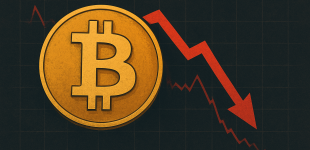
Introduction
In May 2025, the world of cryptocurrency regulation in the United States was jolted by pointed internal criticism from within the Securities and Exchange Commission (SEC). An SEC commissioner, breaking ranks with the agency’s prevailing direction, publicly condemned what they referred to as a dangerous and unsustainable pattern of oversight, equating the agency’s efforts to a game of “regulatory Jenga.” This analogy — sharp and symbolic — paints a stark picture of the fragility in how the agency is currently addressing crypto markets.
This unprecedented commentary has triggered both celebration and concern among crypto stakeholders. Advocates see it as a sign that calls for reform and clarity are gaining traction, while skeptics fear it signals deeper dysfunction within the U.S. regulatory structure. In this in-depth article, we analyze the SEC’s current regulatory posture, explore the roots of internal criticism, and consider the broader implications for crypto markets, innovation, and investor trust.
The SEC’s Position: Guarding Investors, Regulating Innovation
The SEC has historically approached the crypto industry with caution, often invoking the principle of investor protection to justify its firm regulatory stance. Over the past five years, under successive chairs — from Jay Clayton to Gary Gensler and now Robert E. O’Donnell — the commission has taken numerous enforcement actions against crypto exchanges, token projects, and decentralized protocols, citing violations of federal securities laws.
One of the agency’s core strategies has been to assert that many cryptocurrencies, particularly initial coin offerings (ICOs) and certain staking products, fall under the definition of securities. This perspective allows the SEC to mandate disclosures and enforce compliance under the 1933 Securities Act. However, critics argue that applying these legacy frameworks to modern, decentralized technologies is inherently flawed.
The key point of contention isn’t whether regulation is necessary — most agree it is. Instead, it’s how that regulation is being implemented, the lack of clear legislative guidance, and the perceived inconsistencies in the SEC’s approach.
Commissioner’s Reproach: “A Game Of Regulatory Jenga”
The phrase “regulatory Jenga” used by SEC Commissioner Karen Crenshaw has now become a lightning rod in regulatory discourse. Speaking at the Blockchain Regulatory Forum in Washington, D.C., Crenshaw warned that the agency’s current regulatory tactics resemble a risky game — with rules that shift unpredictably and undermine the foundational stability of the crypto ecosystem.
According to Crenshaw, this regulatory instability is eroding market confidence. “Without a clear and consistent framework,” she noted, “we risk disincentivizing responsible innovation and pushing valuable talent and capital offshore.” Her statements underscore a growing rift within the commission, highlighting concerns not just from external stakeholders but also from within its leadership.
This type of public dissent from an active commissioner is rare and signals deeper institutional unease. Crenshaw’s comments reflect the frustration of many who see the SEC’s enforcement-heavy approach as stifling and arbitrary rather than constructive and future-facing.
Enforcement Vs. Guidance: The Regulatory Tension At Play
One of the most common criticisms of the SEC’s crypto oversight is its reliance on “regulation by enforcement.” Rather than issuing formal rules tailored to digital assets, the SEC has frequently chosen to bring lawsuits or settlements against crypto companies.
This tactic has led to landmark cases — from Ripple Labs and Coinbase to Binance and Kraken — but it has also created an environment of fear and confusion. Crypto founders, developers, and investors often feel they are navigating a minefield with unclear laws and retroactive penalties.
The lack of published guidance on how digital assets can comply with U.S. laws makes it difficult for legitimate projects to operate confidently. Several startups have cited the SEC’s unpredictability as a reason for relocating to jurisdictions like Switzerland, Singapore, or Dubai, which offer clearer regulatory paths.
Industry Reaction: A Chorus Of Concern
Crenshaw’s remarks were quickly echoed by key players in the digital asset industry. Leading voices from advocacy groups such as the Blockchain Association and Coin Center applauded her bravery and used the opportunity to renew calls for comprehensive crypto legislation.
Brian Armstrong, CEO of Coinbase, tweeted in response: “Commissioner Crenshaw is right. Regulation needs to be clear, not just aggressive. We’ve asked for guidance — not lawsuits.”
This sentiment was shared by other CEOs, legal experts, and even former government officials. Many have suggested that the current regime is deterring institutional adoption and limiting the U.S.’s global competitiveness in blockchain innovation.
A Global Comparison: How Other Jurisdictions Are Getting It Right?
While the U.S. wrestles with its fragmented regulatory approach, other regions have moved swiftly to establish cohesive frameworks.
European Union
The EU passed the Markets in Crypto-Assets (MiCA) regulation in 2023, creating a harmonized legal environment across member states. MiCA sets out clear requirements for token issuers, stablecoins, and crypto-asset service providers, including licensing, consumer protections, and capital requirements.
United Kingdom
The UK’s Financial Conduct Authority (FCA) has also created sandbox programs and classification guidelines that allow startups to test crypto products while staying within regulatory boundaries.
Singapore and UAE
These jurisdictions offer well-defined frameworks that support innovation without compromising financial integrity. Their success is reflected in the growing number of global blockchain companies establishing hubs there.
The contrast between these regulatory models and the U.S.’s ad hoc approach has led many to argue that America risks ceding its leadership in the crypto economy.
Congress And The Courts: A Tug-Of-War For Jurisdiction
One of the core issues underpinning the SEC’s regulatory ambiguity is the absence of clear federal legislation. While bills like the Responsible Financial Innovation Act and the Digital Commodity Exchange Act have been proposed in Congress, none have yet become law.
This legislative void has enabled overlapping turf wars between the SEC and the Commodity Futures Trading Commission (CFTC) — with both agencies claiming oversight of various crypto assets.
Recent court decisions, such as those in the Ripple case, have further complicated the picture. In some rulings, judges have found that certain tokens are not securities, directly challenging the SEC’s position. These mixed outcomes highlight the urgent need for congressional clarity.
The Future Of The U.S. Crypto Policy: Is Change Coming?
Despite current tensions, there are signs of potential reform. Commissioner Crenshaw’s remarks may influence internal discussions and even reshape leadership strategy. More significantly, bipartisan support is slowly coalescing around the need for legislative clarity.
Earlier this month, Senators Lummis and Gillibrand reintroduced a revised version of their crypto regulation bill, incorporating lessons from recent enforcement actions and market disruptions.
Meanwhile, the new SEC chair, Robert O’Donnell, has shown openness to engaging with industry players. In a recent roundtable with tech leaders, he noted, “We cannot regulate the future by clinging to the past. Our frameworks must evolve.”
Conclusion
Commissioner Crenshaw’s public dissent marks a pivotal moment in the ongoing evolution of U.S. crypto regulation. Her metaphor of “regulatory Jenga” powerfully encapsulates the instability and risk that arise from inconsistent and overly aggressive oversight.
The challenge now is for U.S. regulators, lawmakers, and the crypto industry to come together to build a more resilient and predictable framework. The goal should not be to eliminate risk altogether — but to manage it responsibly while fostering innovation and protecting consumers. Only with clear rules, transparent enforcement, and collaborative governance can the U.S. regain its position as a global leader in the digital asset revolution.







There are no comments at the moment, do you want to add one?
Write a comment